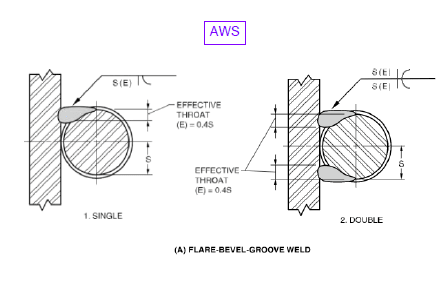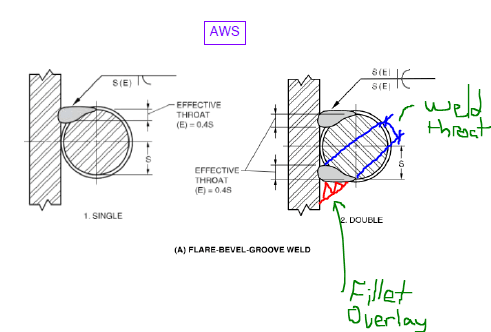When welding A706 rebar parallel to a steel plate via flare bevel groove welds, we typically reference the Design Aid 6.15.3 to establish a length of weld. This design aid shows the effective throat of the weld as 0.2db. AWS D1.4 (Welding of Rebar) also shows the weld effective throat to be 0.2db in Figure 4.1.
My question: Is the 0.2db effective throat a standard no matter what the plate thickness and not a variable? Is there a reason why we wouldn't start increasing the weld throat when the plates get thick as shown in AISC Table J2.3? Attached is a pic of the references.
Thanks in advance!
My question: Is the 0.2db effective throat a standard no matter what the plate thickness and not a variable? Is there a reason why we wouldn't start increasing the weld throat when the plates get thick as shown in AISC Table J2.3? Attached is a pic of the references.
Thanks in advance!


